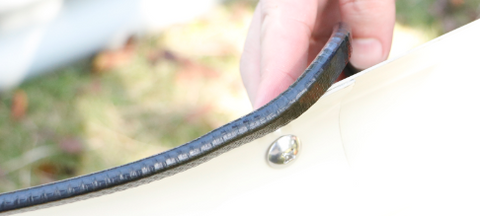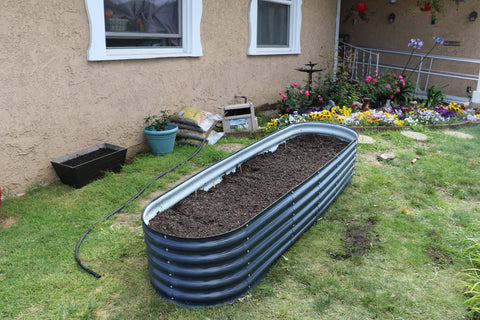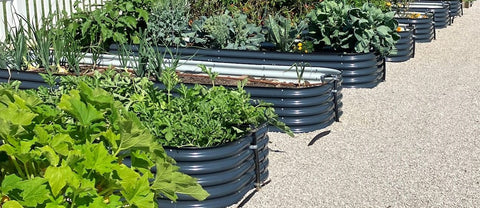Knowledge From Olle Garden Bed: Saving Pumpkin Seeds
Want to know how to save pumpkin seeds for planting next spring? Fortunately, these seeds are easy to preserve. The following content also has some reference value for raised garden beds.
In order to preserve pumpkin seeds, first pollinate the flowers with your hands, so that the plants will grow real pumpkin seeds. For genetic diversity, you need to collect mature hand pollinated pumpkins from 6-12 (or more) plants of the same variety. Cut the pumpkin into slices and remove the seeds and pulp with a clean spoon. Wash the seeds in a jar of water and discard any floating seeds. Then dry the seeds on a plate or coffee filter for a day or two, and store them.

Introduction to Saving Pumpkin Seeds
Pumpkin seeds are one of the easiest seeds for beginners to keep for future planting. They are also a good way to start saving seeds, because you can save seeds from pumpkins you grow or from pumpkins you buy at farmers' markets. You don't always know what you will get, but the process is very interesting!
Pumpkins are just round pumpkins. Most pumpkins belong to the gourd genus, but some pumpkins are the largest gourds or gourds.
Different varieties of pumpkins within a single species can be cross pollinated, which means that if you want to preserve the seeds of a particular variety year after year, you must be very careful to avoid cross pollination. Pumpkins from different plant species are less likely to cross pollinate.
Plant pumpkins to preserve seeds
Start by planting at least 6 to 12 pumpkin plants of the variety you want. This will help ensure that you have a large number of viable seeds with genetic diversity.

Pumpkins can't grow by themselves. Each plant has female flowers and male flowers, but female flowers need to be pollinated by the pollen of male flowers of individual plants to obtain high-quality fruits and seeds. Two kinds of plants of the same variety can pollinate each other, but the pollination of a plant itself will not produce good seeds. To avoid accidentally pollinating plants with your own pollen, you may want to separate pumpkin plants far enough to identify which vines are which.
Select open pollination varieties
Be careful that the pumpkins you pick are open pollinated. Open pollination varieties, such as heirloom and non heirloom (recent) types, are allowed if they are not hybrids (F1 hybrids).

Here are some great open pollinated pumpkin varieties:
Sugar pie pumpkin (gourd)
Jack is a small pumpkin (calabash)
Cinderella Pumpkin (the largest gourd)
Jaradale Pumpkin (the largest gourd)
MarinadiChioggia Pumpkin (Cucumberitamaxima)
Pumpkin (the largest gourd)
Atlantic Giant Pumpkin (the largest gourd)
Seminole Pumpkin (Gourd)
Fairy Tale Pumpkin (Gourd)
Dickinson Pumpkin (Gourd)
Long Island Cheese Pumpkin (Gourd)
Many of these heirloom pumpkins are also good cooking pumpkins, which can be baked into pumpkin pie and other delicacies.
Isolation between varieties
Other pumpkin varieties/varieties of the same plant species shall be separated from the conservation plants. For gourd varieties, please note that this species also includes zucchini, so pumpkin flowers must also be separated from zucchini. The varieties you keep can be simply separated from other varieties by planting them far away from other varieties or establishing a physical barrier between them.
Pumpkin seeds can be stored far away. To minimize cross pollination, isolate the species 800 feet (250 meters) or more away. Because this is such a large distance, it is more meaningful to isolate a single pumpkin flower rather than the whole patch.

Most pumpkin seed preservers either bag individual buds before opening them or close them (to prevent insects from entering). You can close them with tape or with a clothes pin or hairpin. If you have a whole hoop house with insect net, which is specially used for single species, it can also work well.
Companion planting to preserve seeds
Consider adding flowers to your garden. These flowers are designed to keep pollinating insects occupied and distracted. We want bumblebees to spend time around these other (distracting) flowers instead of going from one pumpkin plant to another. Among varieties, planting tall hedgerows like corn will also help reduce cross pollination.
Plant pumpkins to preserve seeds
Keep new pumpkins healthy by regularly watering them, removing diseased leaves, and checking them for pests. You also need to use slow release organic fertilizer and cover the soil around the roots to keep them moist and cool.
Pay attention to the buds, because you need to catch them before they open. They usually look a little yellow at first, but still straight and pointed, rather than the final folds. Place mesh or silk bags on a single bud before flowering.
 Alternatively, close the petals with tape or a clothes pin/hairpin. This will prevent insects from entering and allow careful hand pollination with a paintbrush.
Alternatively, close the petals with tape or a clothes pin/hairpin. This will prevent insects from entering and allow careful hand pollination with a paintbrush.
The artificial pollination of pumpkin flowers can start the next morning (because the flowers close in the afternoon, pollination is not successful under high temperature). Select a female flower on each plant for pollination. Each of these flowers needs to be pollinated with at least one male flower from a different plant (the same variety if trying to preserve the true type).
To remember which pumpkin is hand pollinated, tie the label or ribbon to the stem below the flower before pollination. Pull the petals off the male flowers and open the female flowers. Tap the exposed anthers onto the stigma of the female flower. You can use 2-3 male flowers from different plants to pollinate each female flower to increase genetic diversity.
Thinning pumpkin on grape vines is a common practice to obtain the best quality fruit of larger varieties. Although all pumpkins are usually kept on the mini variety, the larger pumpkins are usually sparse to 1-4 per plant, depending on the size of the variety and how much energy you want the plant to put into a single fruit. Just make sure to leave the hand pollinated pumpkins with labels on the vines!
Choose pumpkin to save seeds
Harvest hand pollinated pumpkins, which are labeled before hand pollination. You need at least 6 pumpkins to ensure genetic diversity. Avoid preserving seeds of individual fruits or plants that appear unhealthy or diseased.

You can also save the seeds of any old pumpkins, but be aware that the seeds may not grow pumpkins that look like the pumpkins they were saved from. If you do not pollinate the plant yourself, it is impossible to know what the seed will look like. But it must be an interesting surprise!
Let the pumpkin ripen on the vine. They should have a very hard skin that cannot be pressed in with nails. Stems should be dry and hard. You can also cure pumpkins by keeping them in a warm place for a few weeks. The seeds from the largest gourd and gourd should be stored for a month or two before harvesting.
How to save pumpkin seeds
Cut the pumpkin and scoop out the seeds with a metal spoon into a bowl or glass jar. Add a little water and stir. Floating seeds shall be removed and discarded. The sinking seeds can be taken out of the jar and dried.
Dry the clean pumpkin seeds in a single layer in a plate, coffee filter, paper towel, wax paper, screen, baking tray or fine mesh filter. A minimum air temperature of 72 ° F will help speed up the drying process. Avoid using dehydrators or ovens as high temperatures can damage seeds.

After complete drying, seal them in glass jars or plastic containers with lids and store them in refrigerators or freezers. You may want to put them in paper envelopes inside the container (or in a large number of envelopes if you share them with friends in the spring). The dried pumpkin seeds used for planting can be stored in sealed containers for more than five years.
